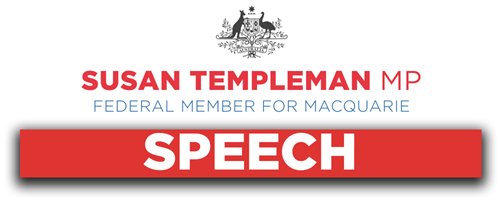
Like many of my generation, my first exposure to polio was reading Alan Marshall's I Can Jump Puddles. I have since met people who survived polio and I note that some of those survivors are now experiencing post-polio syndrome in their later years. But, essentially, we've worked together to completely eradicate polio in the developed world and we're close to getting rid of it everywhere. Vaccination is the only effective preventative measure against polio, and Australia began mass vaccination in 1956. The country's last polio epidemic was in 1961-62, and that was after a second wave took hold because the vaccination rates weren't high enough to achieve herd immunity. So for Australia, this is largely history.
Australians have been at the forefront of the Global Polio Eradication Initiative, which has been a joint effort led by Rotary International, the World Health Organization, the United Nations International Children's Emergency Fund—UNICEF—and many others. When the eradication program began, more than 350,000 cases of polio paralysed and killed children in 125 countries each year. In 2021, it is 99 per cent eradicated. The entire African continent was certified as polio free on 25 August 2020. Wild polio remains in only two countries—Pakistan and Afghanistan. Safe and effective polio vaccines have been the single most important factor in achieving that eradication.
Australia has been a very strong supporter for more than three decades, and has invested more than $135 million in polio eradication over that time. And Rotary was at the forefront, working to eradicate polio for more than 35 years. In 1988, when the joint project with the World Health Organization was launched—that was the official start, but Rotary started a project to vaccinate children against polio in the Philippines in 1979. Rotary members have contributed more than $2.1 billion and countless volunteer hours to protect nearly three billion children from this paralysing disease.
Rotary's advocacy efforts have played a role in decisions made by governments to contribute more than $10 billion to the effort, and my own local Rotary clubs have been involved in this initiative for many years. In 2013, I stood with Katoomba Rotarian Amanda Woods as she helped lobby the then Gillard government to recommit to funding the polio eradication program for another four years. Amanda acknowledged that Australia's contribution to the effort was a game changer when Prime Minister Gillard showed leadership at the Commonwealth Heads of Government Meeting in 2011 and restored polio eradication to priority status on the international agenda.
This year in the Mid Mountains, which Central Blue Mountains Rotary Club calls home, local businesses helped the club raise money through its End Polio fundraiser, where members walked, ran or rolled 10, 20 or 50 kilometres during the month. The support they received included sponsorship from local businesses like Wentworth Falls Podiatry and LoveBites Coffee company. In previous years and decades, every club in my electorate has contributed. They've walked, they've caught trains, they've worn their red 'end polio now' T-shirts to raise awareness. They haven't got sick of the challenge. They've kept going. Next year, 2022, will be a critical year for polio eradication as the program sets out its strategy to achieve eradication by 2026. Progress has been made, but the new challenges in the humanitarian situation in Afghanistan are certainly impeding efforts and risk the outbreak of new polio cases. Additional measures will be required to manage that risk so that we can ensure no widespread polio outbreak occurs.
Now, this has been a vital global effort, and Rotary has been there. It is so easy to see the parallels that we have with the current pandemic, and I'm sure that people around the country would like to see the same level of commitment to Australia helping other countries deal with the COVID pandemic. We need to step up beyond what we are doing. Words are not enough. We have to make sure we do everything we can to help our neighbours, particularly in the Pacific, have the supplies they need and the education program needed to be able to increase their levels of vaccination. We can see what is happening. If we fail, we will be failing all those nations.


